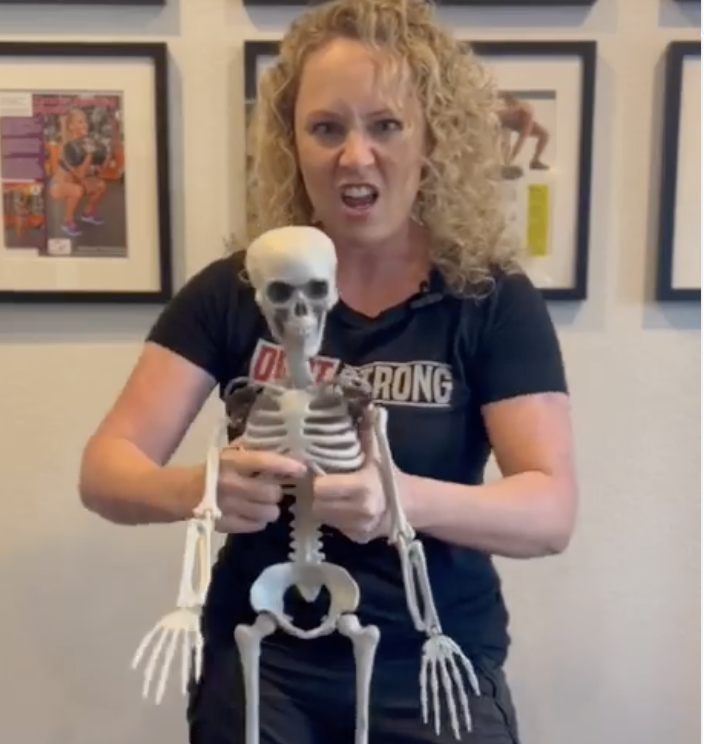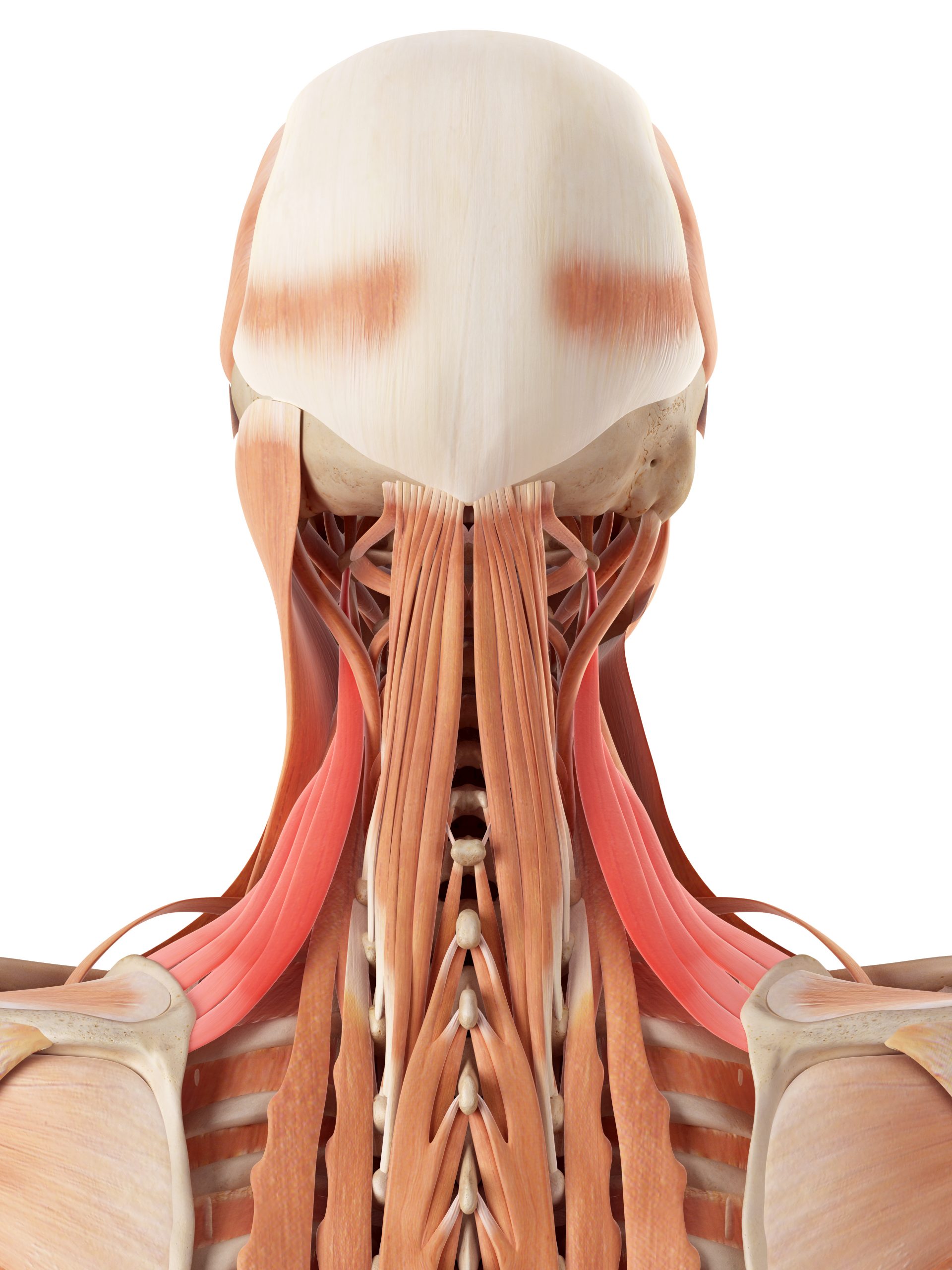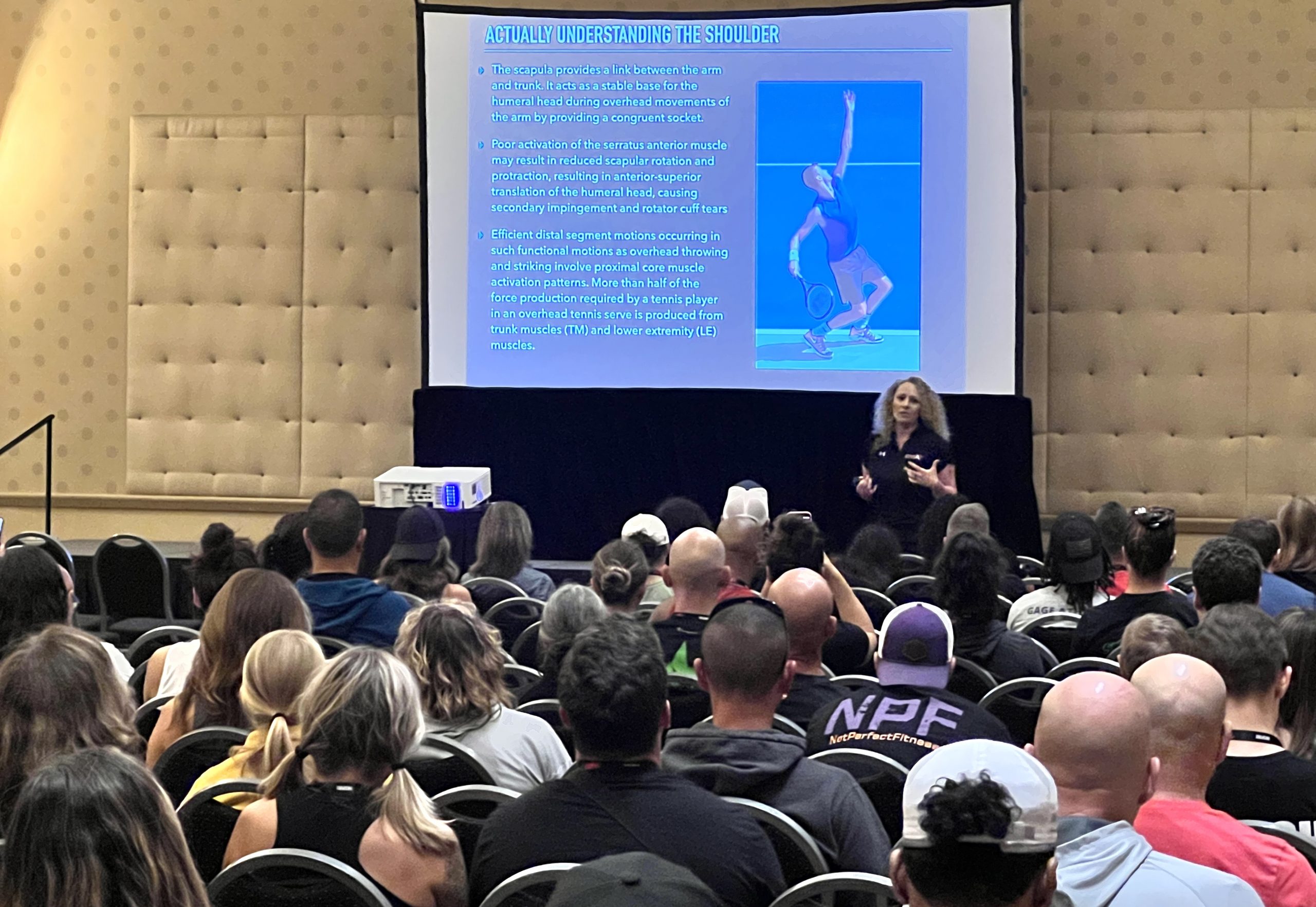5 Better Solutions For Shoulder Mobility Exercises
2024-10-7
Jessica Bento, Physical Therapist (Creator DVRT Restoration Certification, DVRT Rx Shoulder, Knees, Pelvic Control, & Gait Courses)
Probably my biggest complaint in how mobility training is covered by most fitness pros is they don’t look at root causes. Sure, people will grab a random model skeleton and talk to you about how this joint does that, and this joint does this. The issue is that our body isn’t a skeleton, it is a very complex organism that is influenced by many factors often all at once! So, if your “insert random shoulder related joint here” isn’t moving well, then we have to ask why?
-Is there damage to the joint?
-Are there soft-tissue restrictions?
-Are there issues at related parts of the body above and below the shoulder influencing the joint?
-Do people have a past injury history and maybe either didn’t fully recover, or the water they think of their shoulder being “bad” is causing issues?
-Do they have an unbalanced training program?
-Do they do TOO much of one type of movement pattern?
-Do they not move enough?
You see, it would be way easier to tell you that something in this or that joint is the issue, but that wouldn’t be giving you an honest idea of what you actually probably need.

Unfortunately there is WAYYYYYY too much research to show that shoulder mobility isn’t quite that simple. So, we are going to look at how you can still make your shoulder mobility work effective and not take all day in the process. By combining a lot of the elements in specific exercises we can achieve more in less time.
-Neck Issues
Neck problems can significantly impact shoulder mobility due to the close relationship between the neck (cervical spine) and the shoulder complex. The nerves that control shoulder movement originate from the cervical spine. When there is an issue in the neck, such as tightness, poor posture, or nerve compression (e.g., from a herniated disc or muscle spasms), it can cause referred pain or reduce the neural input to the shoulder muscles, leading to weakness or limited range of motion.

Additionally, tension in the neck muscles can pull on the surrounding tissues, including those connected to the shoulder, further restricting movement. Poor neck alignment also affects the scapula (shoulder blade), which needs to move freely for optimal shoulder function. Therefore, addressing neck issues, improving posture, and restoring cervical mobility are key steps to unlocking better shoulder mobility and reducing pain or dysfunction in the upper body.
Now the answer isn’t just cranking on your neck, performing gentle neck movements with breath work can help.
View this post on Instagram
-Why Breath Work Matters
Diaphragmatic breathing, or deep belly breathing, plays a crucial role in improving shoulder mobility by stabilizing the core and enhancing movement efficiency. When we breathe deeply, the diaphragm fully engages, which helps activate the deep core muscles, creating a stable foundation for the spine and upper body. This stability is essential for the shoulders to move freely and effectively.
Additionally, diaphragmatic breathing reduces tension in the neck, upper traps, and chest muscles, areas that often become tight due to shallow breathing patterns. When these muscles are relaxed, the shoulders can achieve a greater range of motion without restriction.
Proper breathing also helps improve oxygen flow to the muscles, increasing circulation and reducing muscle stiffness, which further promotes shoulder mobility. Integrating diaphragmatic breathing with mobility exercises not only improves flexibility but also enhances control and stability, leading to more functional, pain-free shoulder movement.
-Core Stability
Core stability is essential for optimal shoulder mobility because the core provides the foundation for upper body movement. The shoulders rely on a stable base—specifically, the spine, ribcage, and pelvis—to function properly. Without sufficient core stability, the body compensates by overusing the shoulders and surrounding muscles, leading to restricted movement and even injury.
When the core is strong and engaged, it helps stabilize the trunk, allowing the shoulders to move more freely and efficiently. This prevents excess strain on the shoulder joint, which often occurs when the body lacks stability.
Additionally, core muscles, particularly the deep stabilizers, help maintain proper posture and alignment, which is crucial for shoulder function. Poor posture from a weak core, such as slouching or forward rounding, can tighten chest and upper back muscles, further limiting shoulder mobility. Strengthening the core allows the shoulders to work in harmony with the rest of the body, promoting better movement and reducing pain.
View this post on Instagram
-Hip Influences
The hips play a vital role in shoulder health due to the interconnected nature of the body’s kinetic chains. Proper movement in the hips ensures that forces are distributed evenly throughout the body, reducing the strain on the shoulders. When hip mobility or stability is lacking, the body compensates by shifting stress to other areas, including the shoulders, which can lead to overuse and injury.
For example, poor hip mobility can limit the ability to rotate through the torso, causing the shoulders to work harder to complete movements, especially in exercises like throwing, lifting, or overhead motions. Additionally, weak or tight hips can affect posture, leading to misalignment of the spine and shoulders. This posture imbalance—such as excessive forward rounding—tightens the chest and upper back muscles, restricting shoulder movement.

By improving hip mobility and strength, the entire kinetic chain functions more efficiently, supporting better shoulder mechanics and reducing the risk of injury.
-Diagonal & Circular Patterns
Diagonal and circular movement patterns are excellent for shoulder mobility because they mimic the natural, multi-directional way our bodies are designed to move. Unlike linear motions, these patterns engage multiple muscle groups and joints simultaneously, promoting functional strength and flexibility across the shoulder complex.
Diagonal patterns, such as those found in PNF (proprioceptive neuromuscular facilitation) exercises, help activate and coordinate muscles that control the shoulder in dynamic, real-world movements like throwing or reaching. These movements stretch and strengthen muscles across multiple planes, improving mobility while enhancing neuromuscular control.
Circular movements encourage full rotation of the shoulder joint, allowing the joint to move through its complete range of motion. This helps prevent stiffness, promotes flexibility, and improves joint stability. These patterns also train the shoulder to stabilize itself during complex movements, reducing the risk of injury by building strength in various directions and ensuring more fluid, functional movement in everyday tasks or sports.
As you can see, really addressing shoulder mobility takes a little bit of each of these sections. However, almost ALL the drills we have shown integrate most of the concepts that impact shoulder mobility. This is why an integrative approach is not only better when we are talking about muscles of the body, but concepts of movement.
Save 25% this week on all our corrective exercise programs like our MIM Shoulder, DVRT Rx Shoulder Program, and MUCH more with code “dvrt25” HERE
View this post on Instagram
© 2025 Ultimate Sandbag Training. Site by Jennifer Web Design.







